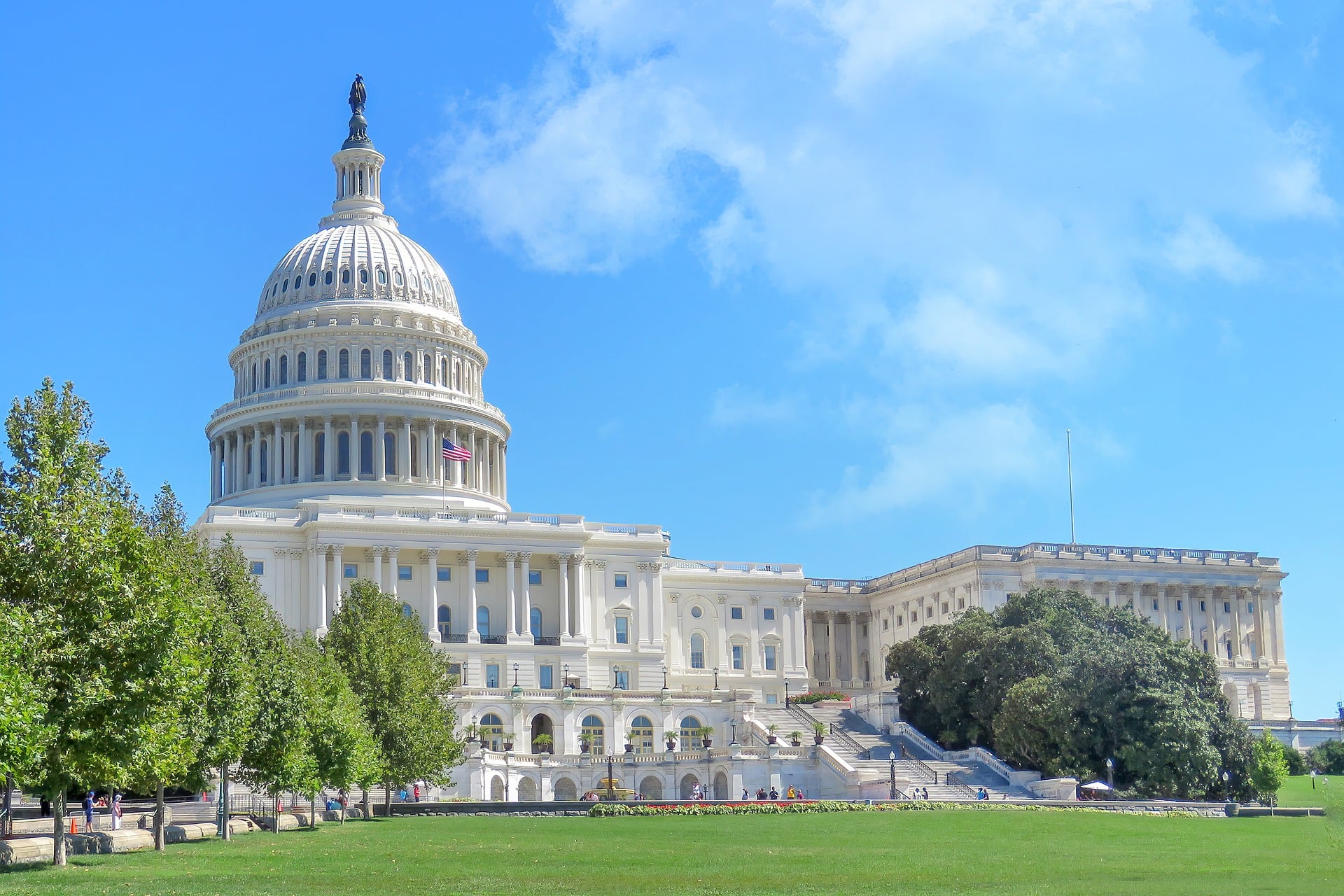Education Center / Five Proposed Energy Policies to Watch in 2025
Blog
Category: Regulatory
Five Proposed Energy Policies to Watch in 2025
Energy, fuel, and tax credits are anything but exempt from legislation and regulatory changes. As we flip to 2025 and the Trump administration takes office, there are many policies (new and old) that stand to impact the energy sector. Below, we’ve outlined five proposed regulatory changes worth watching.
1. 25% Tariff on Canadian Imports
The incoming Trump administration has proposed a 25% tariff on imports from Canada and Mexico that would remain until border concerns are addressed. Currently, this tariff would not include an exemption for crude oil or petroleum products. But what does that mean for the price you’ll see at the pump?
The Ripple Effect on Gas Prices
While the US remains the world’s largest crude oil and natural gas producer, some geographies (such as the Midwest and Rocky Mountain regions) lack the infrastructure and pipeline capacity to rely solely on domestic supply. As a result, the US relies on other countries, especially Canada, for imports. In 2023, 52% of the United States’ gross total petroleum imports (~4.42 million barrels/day) were from Canada. And in 2022, 60% of its gross crude oil imports were from Canada.
However, Canadian blends differ from US-based supply in that they’re heavier. Unlike West Coast refiners who are better outfitted to process US crude oil, refiners in the Midwest and Rocky Mountain regions were built specifically to process Canadian blends. The proposed tariff would make US refiners in these regions pay a premium for either Canadian supply or imports from alternative countries and suppliers. This cost would likely be passed along to customers. If an exemption is not included in the tariff, analysts predict customers in affected regions could see prices at the pump increase by 30-75 cents per gallon, if not more.
2. Revival of the Keystone XL Oil Pipeline
The 1,200-mile Keystone XL pipeline is also back in discussion. Designed to transport heavy crude oil from Alberta, Canada, to Nebraska, this project was originally halted under the Biden administration in January 2021 (when President Biden denied a key cross-border permit) and later abandoned by its developers (TC Energy). Now, it’s being reevaluated by the incoming Trump administration.
Challenges to the Revival
While this pipeline aimed to increase energy security for the US, reviving the project would come with headwinds. Not only does TC Energy no longer own the necessary pipeline system, but the portions of the pipeline that were initially built have since been dug up. To go forward, the project would have to start from scratch—including permitting, easement procurement, construction, and capital expenditures. But some question if it’s necessary. Following the pipeline being canceled, US oil production has reached record highs and alternative pipelines have been used to transport Canadian exports.
3. $7,500 EV Tax Credit Repeal
Over the past several years, electric vehicle (EV) adoption has seen an uptick, in part, thanks to tax credits. Originally introduced under the 2022 Inflation Reduction Act (IRA), qualifying electric vehicles (largely passenger vehicles) purchased in 2023 or after are eligible for a federal tax credit of up to $7,500. However, this credit is being reevaluated by the incoming administration.
Effect on US Electric Vehicle Sales & Fuel Consumption
If repealed, it’s estimated EV sales could decline by 27% annually (~317,000 vehicles). In response, gasoline demand should see a marginal increase: ~155 million gallons in year one and roughly seven billion gallons over ten years (opposed to if the credit remained in place). Yet, the extra volume accounts for only a fraction of annual consumption. In 2023, the US consumed ~376 million gallons of gasoline daily.
Despite a (likely) decline in EV sales initially, electrification efforts won’t come to a halt. With billions already invested in EV research, development, and distribution, it’s unlikely vehicle manufacturers will abandon their EV rollout initiatives. Rather, fleets and organizations will need to look closer at their budgets and allocations to determine how shortfalls can be met between their corporate sustainability commitments and EV deployment initiatives.
4. Modifications to the IRA and Its Clean Energy Funding & Tax Credits
As mentioned above, the Inflation Reduction Act (IRA) of 2022 is a 10-year plan that aims to address energy security, build on domestic manufacturing, and promote clean energy solutions—in part, through funding and tax credits. As the Trump administration takes office and the newly Republican-controlled Congress is sworn in, they will be reevaluating the program. While a full repeal is unlikely, there are some portions of the IRA that Congress will look to alter.
Potential Implications for Tax Credits and Energy Types
Trump’s new Treasury secretary nominee, Bessent, will be able to modify tax provisions within the IRA—guiding how tax credits are allocated to technologies such as carbon capture, electric vehicles, hydrogen, nuclear power, solar, sustainable aviation fuel, and wind. While it’s unknown what modifications will be made, many believe Republicans will shorten the timeframe for developers to apply for credits. This will pressure developers to finalize permitting and construction—for both new projects and those already underway—if they want to claim their respective credits.
Additionally, 45X tax credits (a credit awarded for every clean energy component produced and sold domestically) are being reconsidered. These impact components from EV batteries to solar panels, inverters, and wind turbines to name a few. The concern is that as these industries continue to scale, the amount of tax credits would far surpass the allocated budget. To reduce anticipated costs, a variety of tactics are being considered—two being through tariffs as well as banning companies with ties to China from being eligible for these credits.
5. Expansion of Gas Exports & Oil Drilling
Rounding off the list, developers can anticipate facing fewer hurdles with LNG exports and oil drilling. As the Trump administration takes office this year, they want to lift the pause on LNG exports, expedite drilling permits on federal land, and boost the sales of offshore oil drilling leases. But what does this mean?
Policy Changes to Enable Domestic Supply Growth
Liquified natural gas (LNG) projects will be one area of focus for the new administration. In January of 2024, President Biden froze new LNG export permits in efforts to evaluate the environmental impact. On December 17, 2024, the U.S. Department of Energy released its findings: noting that increasing LNG exports would increase natural gas costs, electricity costs, and pass-through costs for consumers. The Trump administration will look to lift the pause and approve pending permits sooner, so developers can move ahead with construction. LNG remains a key export for the United States. In fact, in 2023, the US become the world’s leading LNG exporter.
Additionally, the new administration will look to increase oil drilling—both on federal lands and off the US coast—by expediting pending permits and increasing the amount of lease sales. Specific to crude oil, it’s also expected that the Trump administration would seek funding to restore the United States’ emergency Strategic Petroleum Reserve, which was depleted during the Ukraine war.
Your 2025 Energy Outlook
This year is shaping up to be a pivotal year for transportation fleets and energy professionals as proposed policies will influence everything from fuel costs to supply and procurement strategies. Regardless of rulings, businesses that proactively assess their operations and stay informed will be better positioned to react to these changes









